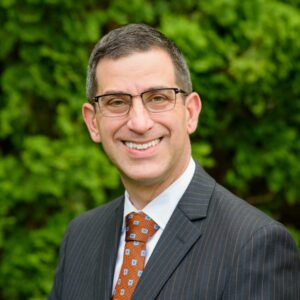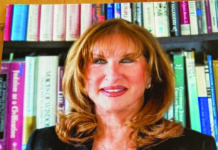
Rabbi Chuck Briskin
Parshat Tazria
It happens every year. The b.mitzvah student comes into my office to discuss their Torah portion. “Rabbi,” they ask, confused and perplexed, “why does the Torah spend so much time discussing skin diseases, and how am I supposed to relate this to my own life?”
Welcome to Parshat Tazria.
I love studying Parshat Tazria with my b.mitzvah students and helping them make a connection with their own lives. It takes more effort to scratch beneath the surface and uncover meaningful lessons that even the portions that seem to be unrelatable can teach.
Parshat Tazria explores the condition of being tum’ah — ritually impure. One becomes tum’ah for several reasons, including contracting tza’ra’at — scaly skin disease often mistranslated as leprosy but more akin to psoriasis. The priest examines and diagnoses the person who contracts tza’ra’at. The person must enter quarantine for seven days, be examined again, return to quarantine for another seven days and then perform a sacrificial ritual that welcomes them back to the community.
In ancient times, contracting strange and scary-looking diseases were thought to result from a person’s bad behavior. People believed that if one transgressed against God, God would punish that person. This is what God did to Miriam, afflicting her with tza’ra’at after she spoke poorly of her brother, Moses, behind his back.
The priest was the conduit between the people and God. Because tza’ra’at was considered a physical reaction to a spiritual transgression, the priest facilitated the person’s quarantine and return. Fear of contagion required the priest to be sure that the person was cured of tza’ra’at before returning to the community.
“And what does this have to do with me?” the curious and perplexed b.mitzvah student may inquire. I ask them, “Do you remember COVID before the vaccine?”
Ever since 2020, this portion has been much easier to explain.
Before we better understood it or could treat it, COVID-19 was our modern-day tza’ra’at. We didn’t know where COVID came from; we didn’t know how it spread — remember spraying our groceries and letting the mail sit in the garage for two days? — or why it spread so quickly and easily.
It was a fearful and devastating period as the world went into quarantine. We didn’t see our parents or grandparents for a long time; we didn’t embrace loved ones unless they were in our family bubble; fist bumps replaced handshakes, and everyone carried a bottle of hand sanitizer. We experienced profound fear, disorientation and disruption, whose long-lasting effects continue to this day — in the workplace, schools, therapists’ offices and our synagogues.
In biblical times, when a person contracted tza’ra’at, they only had contact with the priest. He was called to maintain that sacred connection, help them through the healing process and continue to make them feel seen during a period of fear and uncertainty.
During the first year of COVID-19, rabbis and other clergy were not called upon to diagnose and treat the disease — we left that to the physicians.
But we were called upon to help guide our communities, create new ways to connect and serve our people, worship via Zoom and, sadly, bury far too many people at very small graveside ceremonies. We couldn’t visit hospitals or nursing homes. We offered pastoral care via FaceTime. Nevertheless, we did all we could to maintain a sacred connection and help those who felt particularly isolated and alone feel seen.
I don’t spend much time during the year reflecting on that first year of COVID-19 except when I sit down to study Parshat Tazria. I think back to where we were, how far we’ve come and how much the world and our community have changed. I reflect on the ways we’ve become a post-COVID congregation, including the ways that time forced us to become more creative and nimbler. And I hope and pray that we never experience something like this again in my lifetime.
My current b.mitzvah students still remember the onset of COVID-19 and the effects it carries with them. I look forward to the day when studying this parsha with my students, I ask them, “Do you remember the beginning of COVID?” and they respond, “What’s that?”
Rabbi Chuck Briskin is the senior rabbi of Shir Ami Congregation in Newtown. He also serves on the Leadership Team for RAC-PA, is the chair of the Bucks County Clergy Council and serves on the board of the Bucks County Kehillah. The Board of Rabbis of Greater Philadelphia is proud to provide diverse perspectives on Torah commentary for the Jewish Exponent. The opinions expressed in this column are the author’s own and do not necessarily reflect the view of the Board of Rabbis.





